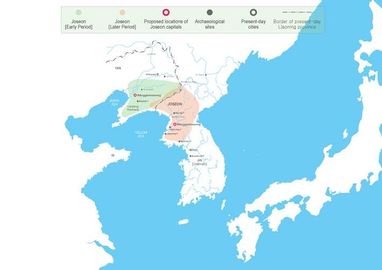Opening the Door to History - Gojoseon

Gojoseon, the earliest Korean state, was located in the area around the Daedonggang River, which runs through present-day Pyeongyang, in the northern Korean peninsula and parts of Manchuria. It dates back to the Bronze Age (2,000-1,500 BCE), although many details about the state, including the exact date of its beginning, the scope of its territory, the location of its capital, and details about its rulers, are unknown or conflicting.
According to an ancient myth recorded in the Memorabilia of the Three Kingdoms (13th century CE), Gojoseon was founded in 2333 BCE by Dangun, a figure who has since become popularly considered to be the founder of the Korean people. There are also records of a 12th century BCE sage named Gija who fled to Gojoseon from Shang China and was involved in the creation of Gojoseon, though the extent of this involvement is debated. However, modern historians believe that Gojoseon likely began sometime between the 7th and 4th centuries BCE, as tribes in the area around the Daedonggang River began consolidating power. It collapsed in the 2nd century BCE after attacks by Yan China, and its territories were briefly taken over by Wiman, a Chinese refugee, but were conquered in 108 BCE by Han China. The Gojoseon territory then became a part of Goguryeo, one of the Three Kingdoms of Korea.
Meanwhile, in the southern portion of the Korean peninsula, the Jin state emerged in the 4th century BCE. Believed to be a federation of small states with some central organization, this state eventually gave rise to the Samhan Confederacies in the 1st century BCE.
Related Articles
- Gojoseon
- Dangun
- The Myth of Dangun
- Memorabilia of the Three Kingdoms (三國遺事, Samguk yusa)
- Gija: The Legend behind the Origin of Korea's Confucian Culture
- Wiman Joseon
- Goguryeo
- Samhan Confederacies
